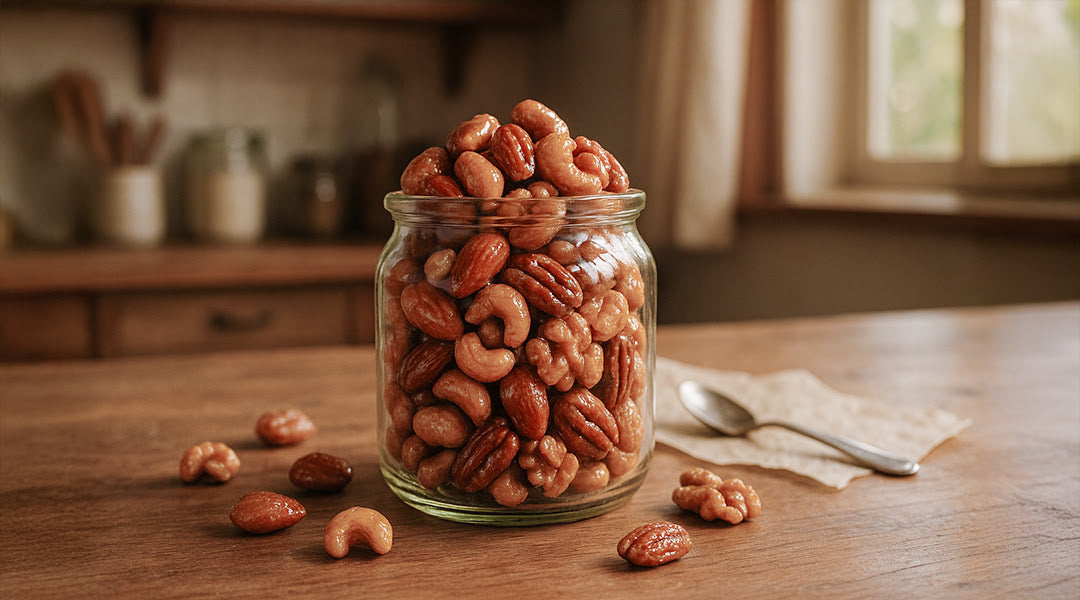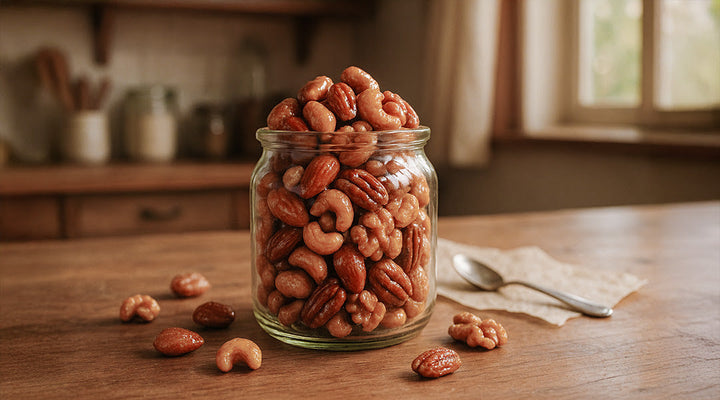
Troubleshooting and Repairing Your Keurig Water Leaks
Have you ever stumbled into your kitchen craving that first morning coffee only to find your Keurig betraying you with a puddle of water? Well, you're not alone. Keurig machines, while convenient and innovative, can sometimes face the frustrating issue of water leaks. But don't fret! This comprehensive guide will walk you through identifying troubleshooting and repairing these leaks.
Recognizing the Signs of a Leaking Keurig
A leaking Keurig can manifest in several ways: water pooling around the base, dripping from the top or even water in places where it shouldn't be. Recognizing these signs early can prevent more significant issues down the road.
The first and most obvious sign of a problem is water pooling underneath the machine. This can range from a small puddle that forms after brewing a cup to a steady drip that continues even when the machine is not in use. Another telltale sign is water dripping from the top of the machine, especially around the water reservoir or the lid area. This could indicate a seal issue or a misaligned component.
Sometimes you might also notice water inside the Keurig where it's not supposed to be such as around the K-Cup pod holder or in the internal compartments. This internal leaking can be particularly problematic as it may not be immediately visible and can lead to longer-term damage if left unaddressed.
Common Causes of Keurig Leaks
Understanding the common causes of Keurig leaks is the first step in troubleshooting.
The complexity of a Keurig coffee maker with its intricate parts and mechanisms means that a variety of issues can lead to water leaks. By identifying these common culprits, you can more effectively target the problem and apply the appropriate fix.
Clogged Machine: The Primary Culprit
Often a clog in the system is the primary reason for leaks. This can happen due to coffee grounds, mineral build-up or even small debris.
Imagine your Keurig as a network of waterways. Over time these pathways can become obstructed by various elements. Coffee grounds, although seemingly fine and innocuous, can escape from K-Cup pods and accumulate in the machine's internal components. This is especially true if you frequently use reusable K-Cup filters or if a pod accidentally bursts.
Mineral build-up known as scaling is another common cause. This occurs when water, particularly hard water with high mineral content passes through the machine over time. The minerals in the water can deposit themselves onto the machine's internal components, slowly narrowing the passages and eventually leading to clogs. This scaling not only disrupts the water flow but can also affect the heating element and overall performance of your Keurig.
Small debris or foreign objects can also find their way into your machine especially if it's not cleaned regularly. This could be anything from small particles in the water reservoir to dust and other contaminants that enter the machine during pod changes or maintenance.
Overfilling the Water Tank

Another common mistake is overfilling the water tank leading to overflow and leaks.
This issue is often overlooked because it seems so simple. When filling the water reservoir, it's crucial to adhere to the 'Max Fill' line indicated on the tank. Overfilling beyond this point can create excess pressure within the machine, leading to water spilling out during the brewing process. This overflow can seem like a leak but it's actually a result of overloading the system. It's a simple fix but a common oversight especially when you're in a hurry or not paying close attention.
Faulty Capsules: An Overlooked Issue

Believe it or not, a faulty K-Cup can also cause your Keurig to leak either due to a bad seal or excessive air pressure inside the cup.
K-Cups are designed to be airtight to preserve the freshness of the coffee grounds. However, if there's a fault in the sealing process or if the K-Cup is damaged in any way, it can compromise this airtight environment. When you place a faulty K-Cup in your Keurig, the brewing process can cause the water to flow incorrectly leading to leaks around the pod holder or even inside the machine.
Another less-known issue with K-Cups is excessive internal air pressure. This can occur if the pod has been stored improperly or subjected to varying temperatures or altitudes. When pierced by the entrance needle of the Keurig, these pressurized pods can release the pressure abruptly, disrupting the normal flow of water and causing leaks.
Step-by-Step Guide to Fixing Your Leaking Keurig
Now let's get down to business and fix that leak!
Dealing with a leaking Keurig can be frustrating but with the right approach, it's a problem that's often easily solved. By following these detailed steps you can address the most common causes of leaks and get your machine back to brewing your favorite beverages in no time.
Unclogging Your Keurig

Cleaning Detachable Components
Your first step in addressing a leaking Keurig should be to inspect and clean all detachable components. This includes the drip tray water reservoir and the K-Cup pod holder. Each of these components can harbor coffee grounds, mineral deposits or other debris that could contribute to blockages and leaks.
To clean these components, remove them from the machine and wash them thoroughly with warm soapy water. For the water reservoir, be sure to rinse it several times to remove any soap residue completely. This simple yet effective step can often resolve minor clogs that are causing leaks.
Descaling and Rinse Cycles
After cleaning the external components it's time to focus on the internal workings of your Keurig. Run a descaling cycle using a Keurig descaling solution or a homemade mixture of white vinegar and water. This process will dissolve any mineral buildup inside the machine which is a common cause of internal clogs.
Once the descaling cycle is complete run 2-3 rinse cycles with plain water to flush out any remaining descaling solution and loosened debris. This step is crucial to ensure that your next cup of coffee is free from any residual taste of vinegar or descaling solution.
Managing the Water Tank

Correct Filling and Alignment
A common and easily overlooked issue that can cause leaks is improper filling and alignment of the water tank. Always fill the water tank to the 'Max Fill' line and no further. Overfilling can create excess pressure and lead to leaks during brewing.
Ensure that the water tank is also properly aligned and seated on the machine. A misaligned tank can prevent the machine from sealing correctly, resulting in leaks during operation. Check that the tank is firmly in place and that there are no gaps where water can escape.
Checking and Replacing K-Cups

An often-overlooked cause of leaks in Keurig machines is the use of faulty K-Cups. Inspect your K-Cups before use for any signs of damage or improper sealing. A damaged K-Cup can affect the way water flows through the machine, leading to leaks.
Try using different K-Cups to see if the issue persists. If you find that leaks occur with certain types of K-Cups but not others, it may indicate a problem with a specific batch or brand of pods. In such cases avoiding those K-Cups or contacting the manufacturer for a replacement might be the best course of action.
Advanced Troubleshooting Tips

When the basic fixes don't seem to resolve the leaking issues with your Keurig it's time to delve into more advanced troubleshooting techniques. These steps address the less obvious but equally critical components of your Keurig that might be the source of the problem.
Cleaning the Entrance Needle
The entrance needle in your Keurig plays a vital role in the brewing process, piercing the K-Cup and facilitating the flow of hot water through the coffee grounds. Over time this needle can become clogged with coffee grounds or debris leading to water flow issues and leaks.
To clean the entrance needle:
- Locate the Needle: First locate the entrance needle. It's typically found inside the lid of the Keurig where you insert the K-Cup.
- Use a Paperclip: Straighten out a paperclip and gently insert it into the needle's opening. Wiggle it slightly to dislodge any coffee grounds or mineral buildup.
- Rinse Thoroughly: After dislodging the debris, run several water-only brew cycles to ensure any loosened particles are flushed out of the system.
This simple cleaning process can often resolve issues with water flow and prevent leaks around the K-Cup area.
Inspecting the Upper Gasket
The upper gasket located around the entrance needle is another component that can cause leaks if it becomes loose or damaged. This gasket forms a seal between the needle and the K-Cup and any issues here can lead to water leaking out of the pod holder.
To inspect and fix the upper gasket:
- Check for Damage or Looseness: Open the lid of your Keurig and locate the upper gasket around the entrance needle. Examine it for any signs of damage, wear or looseness.
- Reposition or Replace if Necessary: If the gasket is loose gently repositioned it to ensure it sits snugly around the needle. If it's damaged it may need to be replaced. Replacement gaskets are usually available from Keurig or third-party vendors.
- Run a Test Brew: After adjusting or replacing the gasket run a test brew with a K-Cup to check if the leak has been resolved.
O-Ring and Water Tank Assessment
The O-Ring at the base of the water tank is another critical area to inspect. This small component creates a seal between the water tank and the machine and any issues with it can lead to leaks at the bottom of your Keurig.
To assess the O-Ring and water tank:
- Locate the O-Ring: Remove the water tank and locate the O-Ring at the base where it connects to the machine.
- Check for Damage or Misalignment: Inspect the O-Ring for any cracks, damage or misalignment. A damaged O-Ring will need to be replaced, whereas a misaligned one can simply be repositioned.
- Examine the Water Tank: While the tank is removed, inspect it for any cracks or damage especially at the base. Even a small crack can cause significant leaks.
- Replace if Necessary: If you find any damage to the water tank, it's advisable to replace it to prevent future leaks.
Preventive Maintenance for Longevity

Taking proactive steps to maintain your Keurig can significantly extend its lifespan and ensure it continues to brew your favorite beverages perfectly. Here's how you can incorporate regular maintenance and proper usage into your routine:
Regular Cleaning and Descaling
Keeping your Keurig clean is not just about maintaining hygiene; it's also about ensuring the machine operates efficiently. A routine cleaning and descaling schedule is essential for preventing future leaks and maintaining the overall health of your Keurig.
- Daily Cleaning: After each use, it's good practice to wipe down the machine and remove any coffee grounds or spills. The drip tray and pod holder should be regularly cleaned to prevent buildup.
- Monthly Descaling: Over time mineral deposits from water can build up in your Keurig leading to clogs and inefficiency. Descaling your machine every 3-6 months, depending on your usage is crucial. Use a descaling solution recommended by Keurig or a homemade mixture of white vinegar and water to break down these deposits.
- Water Filter Replacement: If your Keurig has a water filter, remember to replace it every 2 months or as recommended. This not only improves the taste of your coffee but also reduces mineral buildup in the machine.
Proper Usage and Handling
How you use and handle your Keurig can impact its longevity.
- Follow Manufacturer Instructions: Always use your Keurig as per the manufacturer's instructions. This includes using the correct size of K-Cups and not overfilling the water reservoir.
- Be Gentle: Avoid being rough when inserting K-Cups or handling movable parts of the machine. Gentle usage can prevent accidental damage to sensitive components.
- Turn Off When Not in Use: To conserve energy and reduce wear and tear on the heating elements, turn off your Keurig when it's not in use.
When to Consider Replacement

Even with the best care your Keurig won't last forever. There comes a point when replacing it might be more cost-effective than repairing it.
Signs Your Keurig Needs Replacing
Here are some signs that your Keurig might be nearing the end of its lifespan:
- Slow Brewing: If your Keurig takes significantly longer to brew a cup than it used to, this could be a sign of internal wear and tear.
- Watered-Down Coffee: When your Keurig no longer brews coffee at the right strength or if the coffee tastes watered down, it could indicate a problem with the brewing mechanism.
- Persistent Leaks: If leaks continue despite thorough troubleshooting and maintenance, the issue might be more serious or cost-prohibitive to repair.
- Frequent Breakdowns: If you find yourself constantly fixing different parts of your Keurig, it might be more economical in the long run to invest in a new machine.
- Obsolete Model: Sometimes the model of your Keurig might become obsolete, making it difficult to find replacement parts or support for repairs.
Conclusion
While Keurig water leaks can be a nuisance, most issues are easily diagnosable and fixable. It's comforting to know that a leaky Keurig is often not a sign of a major malfunction but rather a call for regular maintenance or a simple repair. By following the troubleshooting steps outlined above, you can quickly identify and address the root cause of most leaks.
However, it's important to recognize when a problem is beyond your capacity to fix. If you've tried all the suggested solutions and still encounter persistent issues, it may be time to consult with Keurig customer service. Their expertise can provide further guidance and if your machine is still under warranty, they can advise on repair or replacement options. In some cases, considering a replacement might be more practical, especially if your Keurig is showing signs of extensive wear or is an older obsolete model.
FAQs
How often should I descale my Keurig to prevent leaks?
Descaling is a critical maintenance task that should be done every 1-2 months, depending on your usage and the hardness of your water. Regular descaling prevents mineral buildup, which is a common cause of clogs and leaks in Keurig machines.
Can using non-Keurig K-Cups cause leaks?
While non-Keurig K-Cups can generally be used, it's important to ensure they are compatible with your machine. Incompatible pods can create pressure issues or fail to align properly with the puncture needle, leading to potential leaks.
What should I do if my Keurig is leaking from the bottom?
If your Keurig is leaking from the bottom, check the O-Ring at the base of the water tank for any signs of wear damage or misalignment. Also inspect the water tank for cracks or leaks as these are common sources of bottom leaks.
Is it normal for my Keurig to leak a little after brewing?
It's normal for a Keurig to release a few drops of water after brewing. However consistent or significant leaking is not normal and indicates an underlying problem that needs attention.
Can hard water cause more frequent clogging in my Keurig?
Yes, using hard water in your Keurig can lead to faster mineral buildup inside the machine. This increases the likelihood of clogs and leaks. Using filtered or bottled water can reduce this risk.
Should I attempt to repair my Keurig if it's under warranty?
If your Keurig is under warranty, it's advisable to contact Keurig customer service before attempting any repairs. Unauthorized repairs can void your warranty.
How can I tell if my Keurig's water tank is cracked?
To check for cracks in the water tank remove it from the machine and inspect it closely, especially around the base and sides. Look for any signs of damage or leakage which could be causing water to escape.
Check out Lifeboost Coffee Grata Medium Roast.









